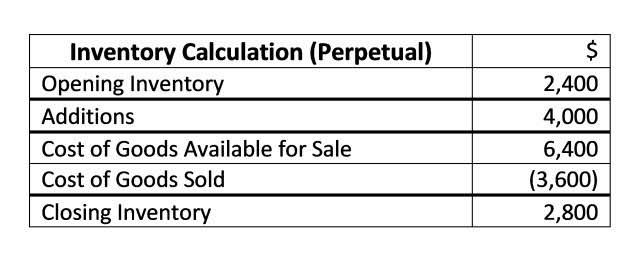
Unlike traditional profit calculations that fixed costs can cloud, contribution margin focuses solely on variable costs, providing a clearer picture of the impact of incremental changes. Whether adjusting pricing strategies, renegotiating supplier contracts, or scaling production, businesses can make informed decisions backed by quantifiable data. You might wonder why a company would trade variable costs for fixed costs. Other reasons include being a leader in the use of innovation and improving efficiencies.

Costs at Lowe’s Companies, Inc

A store owner will pay a fixed monthly cost for the store space regardless of how many goods are sold. This metric is typically used to calculate the break even point of a production process and set the pricing of a product. They also use this to contribution margin income statement forecast the profits of the budgeted production numbers after the prices have been set. Let’s run through an example to see how the income statement is constructed. We will use the same figures from the absorption and variable product cost post.
- A contribution income statement shows what revenue is left after you’ve subtracted the variable expenses.
- We’ve tailored this guide for finance professionals hoping to deepen their understanding of this tool and leverage its benefits for more informed decision-making.
- To calculate sales, take the price of the product and multiply by the number of units sold.
- They also use this to forecast the profits of the budgeted production numbers after the prices have been set.
- The 60% CM ratio implies the contribution margin for each dollar of revenue generated is $0.60.
- If they exceed the initial relevant range, the fixed costs would increase to \(\$400\) for nine to sixteen passengers.
Analysis of the Contribution Margin Income Statement
- The contribution margin represents the revenue that a company gains by selling each additional unit of a product or good.
- As we said earlier, variable costs have a direct relationship with production levels.
- ABC Cabinets can use the contribution format for segment analysis, evaluating its two business segments and their relative contribution margins.
- Because this figure is usually expressed as a percentage, we’d then divide the contribution margin by the revenue to get the ratio of 0.44.
- Request a free demo and see how Cube can help you save time with all your contribution margin income statements, reports, analysis, and planning.
It’s a useful tool for making decisions on pricing, production, and anything else that could improve profitability. A contribution margin income statement is an income statement in which all variable expenses are deducted from sales to arrive at a contribution margin. Then, all fixed expenses are subtracted to arrive at the net profit or net loss for the period.

Contribution Margin vs. Gross Margin: What is the Difference?
A university van will hold eight passengers, at a cost of \(\$200\) per van. If they send one to eight participants, the fixed cost for the van would be \(\$200\). If they send nine to sixteen students, the fixed cost would be \(\$400\) because they will need two vans. We would consider the relevant range to be between one and eight passengers, and the fixed cost in this range would be \(\$200\).

Contribution Margin Ratio Calculation Example
This statement provides a clearer picture of which costs change and which costs remain the same with changes in levels of activity. At a contribution margin ratio of \(80\%\), approximately \(\$0.80\) of each sales dollar generated by the sale of a Blue Jay Model is available to cover fixed expenses and contribute to profit. The contribution margin ratio for the birdbath implies that, for every \(\$1\) generated by the sale of a Blue Jay Model, they have \(\$0.80\) that contributes to fixed costs and profit. Thus, \(20\%\) of each sales dollar represents the variable cost of the item and \(80\%\) of the sales dollar is margin. Just as each product or service has its own contribution margin on a per unit basis, each has a unique contribution margin ratio. In three ways, a contribution margin income statement differs from a standard income statement.
Taxes and other company expenses can obscure how well a company’s products or services perform. This makes the EBITDA figure important for investors looking to put money into a business. A contribution margin is a narrow view of a product or service’s profitability, but the net profit is a much wider and more comprehensive look at a company’s financial performance. An income statement would have a much more detailed breakdown of the variable and fixed expenses. COGS only considers direct materials and labor that go into the finished product, whereas contribution margin also considers indirect costs.
The contribution margin12 represents sales revenue left over after deducting variable costs from sales. It is the amount remaining that will contribute to covering fixed costs and to operating profit (hence, the name contribution margin). The Contribution Format Income Statement, also known as the variable costing income statement, is a financial report that separates costs into fixed and variable costs. Unlike the traditional income statement that categorizes costs as either cost of goods sold or operating expenses, the contribution format statement focuses on identifying costs that vary directly with sales levels.

Fixed production costs were $3,000, and variable production costs amounted to $1,400 per unit. Fixed selling and administrative costs totaled $50,000, and variable selling and administrative costs amounted to $200 per unit. Variable costs probably include cost of sales (the cost of goods sold) and a portion of selling and general and administrative costs (e.g., the cost of hourly labor).
- In effect, the process can be more difficult in comparison to a quick calculation of gross profit and the gross margin using the income statement, yet is worthwhile in terms of deriving product-level insights.
- This is due to the fact that it displays the contribution margin, which is directly influenced by the level of sales.
- Similarly, we can then calculate the variable cost per unit by dividing the total variable costs by the number of products sold.
- The contribution margin can highlight how changes in the structure of sales and expenses can impact the bottom line without being obscured by fixed costs.
- And finally, the gross margin is replaced in the statement by the contribution margin.
- If they send nine to sixteen students, the fixed cost would be \(\$400\) because they will need two vans.
Contribution Margin Formula
What makes this statement so important is its ability to show profit potential. It serves as a specialized document in financial analysis that strips down revenue into critical components and provides an at-a-glance view of a company’s variable and fixed costs relative to its sales. In essence, if there are no sales, a contribution margin income statement will have a zero contribution margin, with fixed costs clustered beneath the contribution margin line item. As sales increase, the contribution margin will increase in conjunction with sales, while fixed expenses remain (approximately) the same. Fixed expenses will increase if there is a step cost situation, where a block of expenses must be incurred to meet the requirements of an increase in activity levels. For example, sales may increase so much that an additional production facility must be opened, which will call for the incurrence of additional fixed costs.
